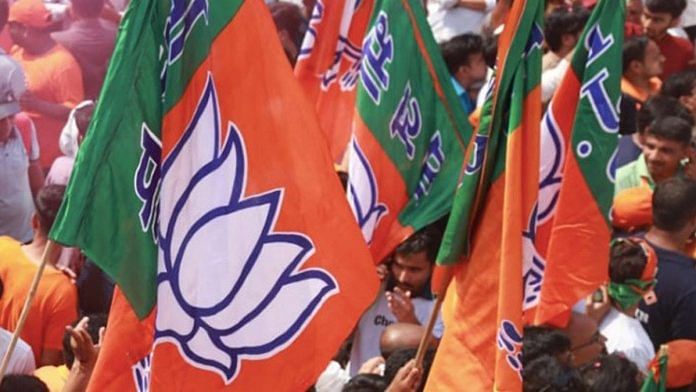Thank you dear subscribers, we are overwhelmed with your response.
Your Turn is a unique section from ThePrint featuring points of view from its subscribers. If you are a subscriber, have a point of view, please send it to us. If not, do subscribe here: https://theprint.in/subscribe/
Since 2014, when the BJP formed the central government under Prime Minister Narendra Modi, the party has consistently advocated the concept of a “double engine sarkar.” This term suggests having the same party in power at both the central and state levels that would lead to faster development and more efficient governance.
Now as BJP has unexpectedly and remarkably won Haryana Assembly Election for a record third consecutive time with higher seats (48) and higher vote share (40%). So does BJP have been more successful in the pro-incumbency narrative and retaining power in states once elected. Let’s analyse the data from 2014 onwards.
Since 2014, the BJP as a standalone party have repeated governments in Uttar Pradesh (2017, 2022), Uttarakhand (2017, 2022), Assam (2016, 2021), Manipur (2017, 2022), Arunachal Pradesh (2019, 2024), Gujarat (2017, 2022) and Haryana (2019, 2024), Tripura (2018, 2023).
Although Madhya Pradesh is a stronghold of the BJP, initially in 2018 the party lost power to Congress and BSP alliance, only to gain back later through defections and manoeuvring. Similar was the case with Maharashtra, where BJP and Shiv Sena fought elections together but later defected to Congress and NCP to form the government in 2019 assembly elections.
In contrast, Congress was unable to retain power in Rajasthan and Chhattisgarh in the 2023 assembly elections, despite having a strong state leader. But did manage to win back BJP ruled states in direct fight with Karnataka (2023) and Himachal Pradesh (2022), both states currently are facing anti-incumbency due to various factors.
In fact, the performance of some INDIA Alliance Partners or Regional Parties was better than Congress. Parties such as AITC in West Bengal, CPI (M) in Kerala, and AAP in Delhi were able to repeat their government in respective states.
Below are key reasons as to why BJP does better in retaining power in states:
- The party has a strong network of booth-level foot soldiers that include booth pramukhs, panna pramukhs and panna samitis that work tirelessly at ground. The party has always projected itself as a Cadre based party
- Experienced strategists like Amit Shah and JP Nadda have a better understanding of caste combination and forging alliances either to gain vote share or cut votes of opposition parties.
- Support from RSS plays a major role for BJP both at state and national level. The RSS karyakartas are very active on ground by organising regular meetings, giving ground level feedback, distributing pamphlets and going door-to-door to drive voter awareness.
- Also, another fact is that BJP is a rich party that spends a lot on promotional ads across print and digital media. It is often accused of using state powers to bend the rules to favour them with regards to election dates and phases.
Now with a coalition government at centre and a diminishing popularity of PM Modi, it remains to see how the party would perform in state elections over the next 5 years. Ultimately, the double engine narrative remains a mixed reality rather than an unquestioned truth. The effectiveness of a double-engine model may depend on local governance, development policies, and leadership rather than winning elections on caste combinations and polarization.
These pieces are being published as they have been received – they have not been edited/fact-checked by ThePrint


